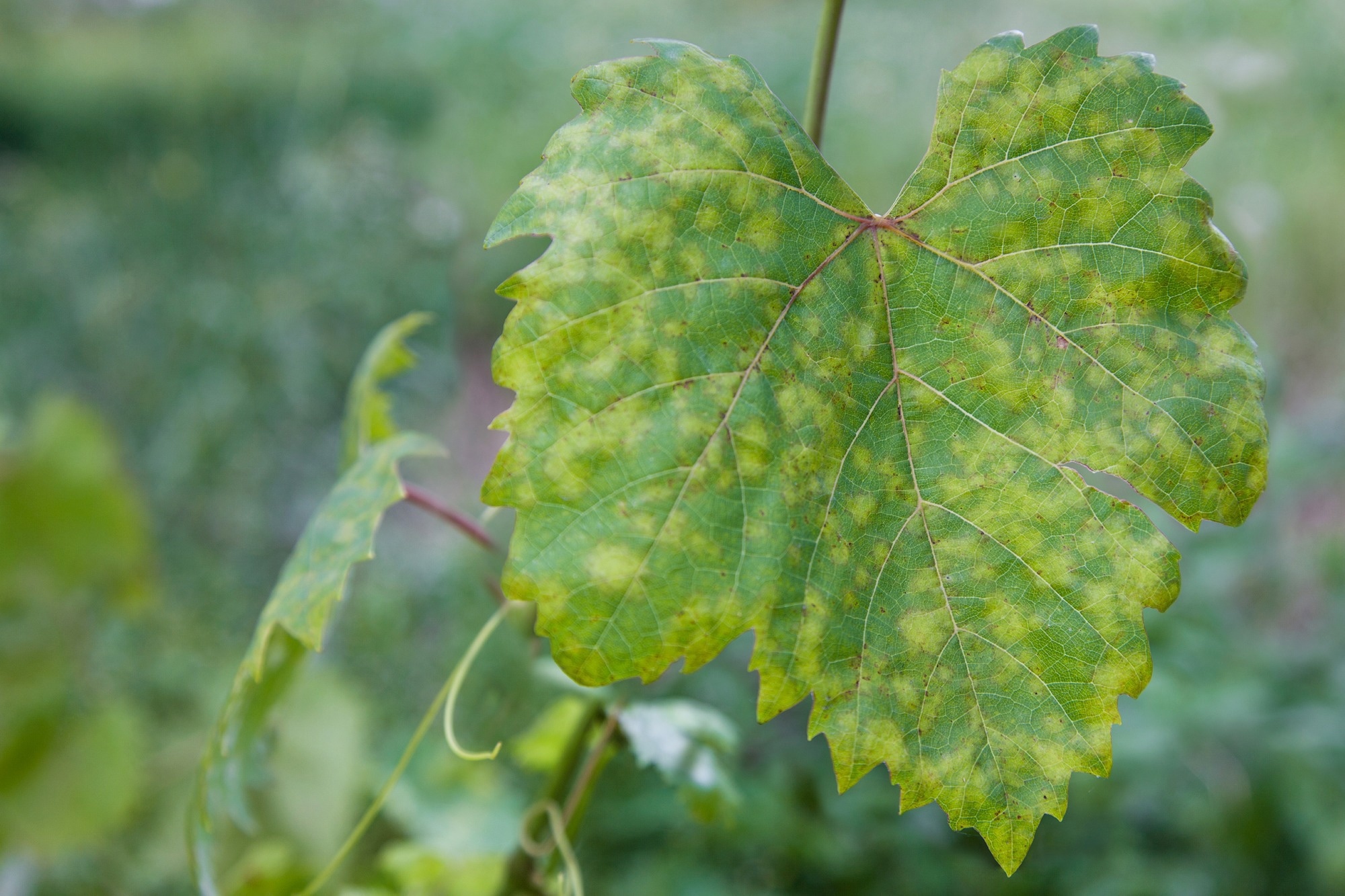In a recent article published in the journal Scientific Reports, researchers introduced a novel approach for detecting and classifying grape leaf diseases, employing a deep convolutional neural network (DCNN) classifier model. They utilized a publicly available dataset comprising grape leaf images afflicted with four distinct diseases: black rot, Esca (ESCA), leaf blight, and healthy specimens.
 Study: Deep Convolutional Neural Network for Grape Leaf Disease Detection. Image Credit: Vadym Zaitsev/Shutterstock
Study: Deep Convolutional Neural Network for Grape Leaf Disease Detection. Image Credit: Vadym Zaitsev/Shutterstock
Background
Grape cultivation plays a vital role in the agricultural sector, contributing significantly to the economy and supporting the livelihoods of numerous farmers globally. However, grape plants are susceptible to various pests and diseases, leading to reduced production quality and quantity and substantial economic losses.
Plant diseases pose a significant challenge for grape growers, necessitating timely and accurate diagnosis and management to mitigate losses and preserve plant health. Therefore, there is a pressing need for automated and efficient disease diagnosis systems capable of assisting farmers in timely and accurately identifying grape leaf diseases for effective management, prevention, and informed decision-making.
Traditionally, grape leaf diseases have been diagnosed through visual inspection by experts, which is subjective, time-consuming, and prone to errors. However, with the evolution of computer vision and deep learning techniques, automated and efficient disease detection systems have emerged, leveraging image processing and machine learning methodologies. Among these approaches, convolutional neural networks (CNNs) have gained popularity as deep learning algorithms capable of automatically extracting and learning features from images, facilitating their classification into different categories.
About the Research
In this paper, the authors developed a DCNN classifier model for the multiclass classification of grape leaf diseases. Their approach aims to identify four different types of grape leaf diseases: black rot, ESCA, leaf blight, and healthy specimens accurately and effectively. To train and evaluate their model, they employed a standardized dataset comprising 9027 grape leaf images sourced from Kaggle. These images were divided into training, validation, and testing sets, with 80%, 10%, and 10% of the data allocated to each, respectively. Each image was of dimensions 256 × 256 pixels and labeled with the corresponding disease type label.
The researchers initially developed a conventional CNN model without employing data augmentation and trained it on the original dataset. They observed that while the model exhibited high training accuracy, its validation accuracy was comparatively low, indicating overfitting. To address this issue, they implemented data augmentation techniques such as zoom and horizontal flip to augment the diversity and size of the training data. Subsequently, they constructed a CNN model integrated with data augmentation and trained it on the labeled dataset. This approach led to an improvement in validation accuracy and a reduction in overfitting.
In addition, the study introduced a DCNN classifier model based on the visual geometry group 16 (VGG16) architecture, well-known for its effectiveness in image classification tasks. The VGG16 model comprises 16 layers, including 13 convolutional layers and 3 fully connected layers, making it a prominent choice for tasks like image classification and object recognition.
Pre-trained on the ImageNet dataset, which encompasses a large number of generic images, the VGG16 model served as the foundation. The authors modified this model by adding three additional CNN layers and modifying the output layer to accommodate four classes corresponding to the grape leaf diseases. Subsequently, they trained the DCNN model using the augmented dataset and evaluated its performance.
Furthermore, the study conducted a comparative analysis of CNN models without augmentation, CNN models with augmentation, and the developed DCNN model using various evaluation metrics such as accuracy, F1-score, recall, precision, and confusion matrix.
Research Findings
The outcomes showed that the DCNN classifier model outperformed the other two models across all metrics. With a training accuracy of 99.18% and a test accuracy of 99.06%, the DCNN classifier model surpassed the CNN model with augmentation, which achieved a training accuracy of 96.03% and a test accuracy of 96.01%, as well as the CNN model without augmentation, which achieved a training accuracy of 98.96% and a test accuracy of 93.02%. Additionally, the DCNN classifier model exhibited the highest F1-score, precision, and recall values of 0.99 for all classes.
The confusion matrix indicated accurate classification of all healthy and leaf blight images by the DCNN classifier model, with only a few errors observed in classifying black rot and ESCA images. While the CNN model with augmentation also performed satisfactorily, it showed a higher error rate in classifying black rot images. However, the CNN model without augmentation denoted signs of overfitting, as it has a large gap between the training and test accuracy and made many errors in classifying the ESCA and leaf blight images.
Furthermore, the authors compared their results with some existing studies utilizing various methods for grape leaf disease identification, such as a unified framework based on multiple CNNs (UnitedModel), deep improved CNN (DICNN), CNN, and support vector machine (SVM). The comparison underscored the superiority and reliability of their DCNN model, as it achieved the highest accuracy among all methods evaluated.
Applications
The newly presented model serves as a decision support system for farmers, enabling them to accurately diagnose grape leaf diseases and implement necessary control measures. Integration with mobile devices or drones facilitates real-time capture and processing of grape leaf images, offering immediate feedback to farmers. Moreover, its applicability extends to other crops and diseases through the utilization of diverse datasets and adjustments to the network architecture.
Conclusion
In summary, the paper comprehensively demonstrated the effectiveness and feasibility of the DCNN model for grape leaf disease identification, highlighting its potential applications in agriculture. Moving forward, the researchers acknowledged limitations and challenges and suggested future directions to enhance the model's performance. They recommended exploring novel augmentation techniques, optimizing the hyperparameters, and integrating state-of-the-art deep learning architectures.